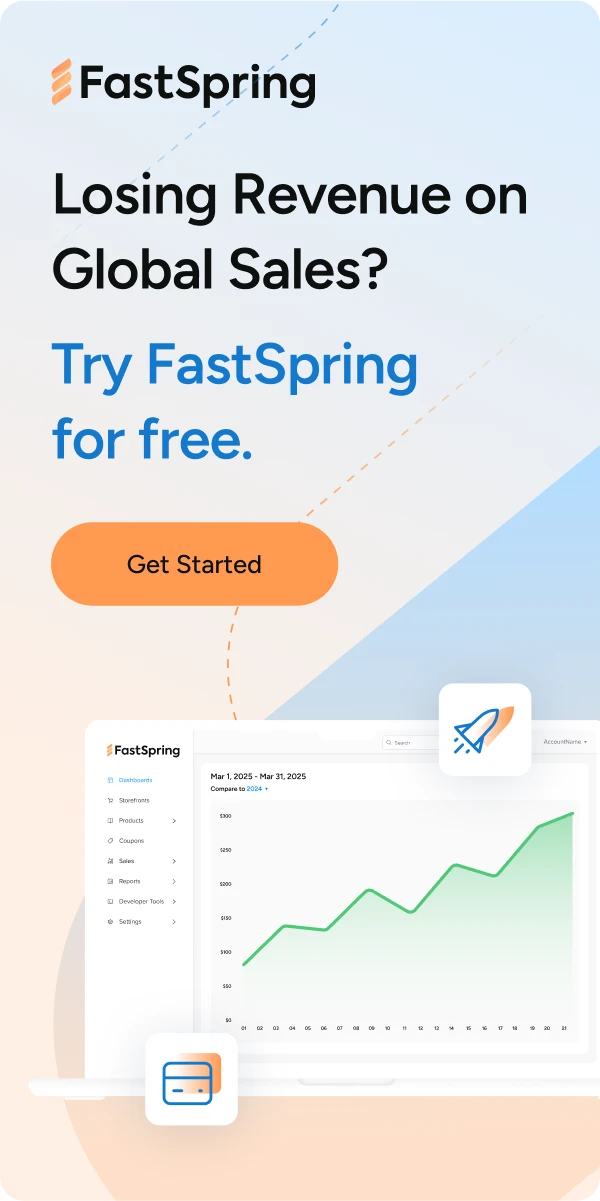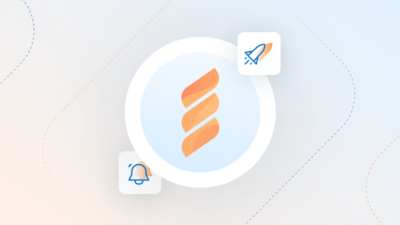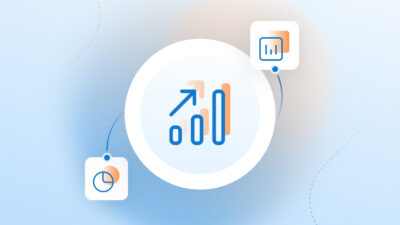Note: The FastSpring WordPress plugin is no longer supported or actively maintained. While it may still function as expected, we do not guarantee future compatibility, bug fixes, or security updates. For an example of how you can deploy a build on WordPress or elsewhere, please see our fsBuilds episode here.
When it comes to digital businesses, your website is probably the single most important point of interaction with your customers. Whether they are prospective customers “just browsing”, loyal fans of your product, recent onboards seeking support, or bots looking to crawl and catalog your endeavors—their experience on your website is going to play an outsized role in forming an impression of your business. You need to constantly look for ways to bolster your brand by ensuring the best possible web experience for all visitors.
With WordPress powering a significant chunk of the web, today we’re looking at nine areas that can improve your customers’ experience while visiting your WordPress website.
Improve Your Site Security
If your website is the lifeblood of your business, wouldn’t you do everything in your power to try and protect it? It’s estimated that roughly 90,978 security attacks against websites happen daily. While the idea of a malicious attack on your site sounds scary, following these simple tips could save your business a lot of trouble down the road.
1. Keep the site updated with the latest version of WordPress.
The WordPress platform is constantly updated. This is great because it means a lot of talented contributors are keeping an eye open for security holes and possible improvements. The frequent stream of new features and platform updates helps ensure that you never have to worry about working with an outdated solution but you need to be proactive and always install the latest version of WordPress as soon as it’s released. This can be a headache (what if my themes or plugins aren’t keeping up with the pace of change in WordPress core?) but trust us—it’s worth keeping things updated.
2. Lockdown (and move) the login page.
There are countless botnets out there on the interwebs, trying to break into WordPress admin area as we speak. Because WordPress is so popular, trying to break into it is equally popular.
But with some simple changes, you can outsmart most of them. Use a plugin like Loginizer to add a captcha to your login page, change the default login url from “wp-login” to something unique and not easy to guess. Also, disable login hints! Login hints are great for jogging your memory but you really shouldn’t have them enabled for your WordPress login page. In fact, those helpful hints telling you that your username or password combination is incorrect can be just as helpful for hackers.
3. Utilize two-factor authentication.
It’s always a little annoying to have to check your email or text messages for a two-factor auth code – but this form of authentication dramatically improves security. Use a plugin like Loginizer (mentioned above!) to add 2FA to your WordPress admin area.
Prioritize Site Speed
Site speed is such an important part of the user experience, but the truth is many sites still aren’t placing enough emphasis on decreasing page load times. According to Google, 53 percent of mobile users will leave a page that takes longer than three seconds to load. If you’re running a digital business, high bounce rate on your site can directly translate into lost sales of your software or digital product.
Here’s what you can do to preserve site speed and protect your revenue:
4. Optimize image size.
Reducing the file size of your images—without sacrificing quality—will help your pages load faster. Although there are a variety of external tools on the web, one of the most popular compression tools is TinyPNG, which also offers a WordPress plugin to reduce image sizes in big batch processes.
5. Start with a solid framework/theme.
In the digital age, faster is always better and less is (usually) more. You might be thinking that running a complex theme with increased interactivity, fancy scroll effects, and cool animations will improve your customer’s browsing experience. In reality, you could have the opposite effect.
Overly complex themes are often laden with unnecessary scripts or large Javascript files that can end up bloating up your website and increasing your page load speed. To combat this, consider running an audit of your site and identify the core functionality. Keeping the “guts” of your site simple will reduce page load times and positively influence your visitor’s site experience. If you simply can’t live without a certain plugin or theme, consider concatenating all of its styles and scripts into single files, so that the page makes fewer requests.
6. Caching, compression, CDN – the three C’s!
If you want a page to load quickly, you can’t live without caching, compression, and a content delivery network.
Caching means users aren’t constantly waiting while your site makes trips to the database and repeatedly processes all the logic in your templates. With caching, these processes happen once, and the results are stored as a static file. Subsequent users get served this static file, dramatically reducing their wait time and also decreasing the burden on your host. There are a variety of WordPress caching solutions – WP SuperCache and WP Rocket are two popular examples.
Compression – you know how a zip file is quick to download, and then it expands into a massive image, app, video, or entire directory of useful files when you open it on your desktop? Well, compression isn’t just for file downloads – there are some amazing compression algorithms that can also transfer HTML, CSS, JavaScript, and images from servers to browsers. Gzip is probably the most common and works well with the traditional Linux/Apache/MySQL/PHP stack that WordPress runs on. Again, there are plugins that can enable compression rules in Apache (WP Rocket is one), or you can just modify your .htaccess file. Enabling compression is an easy way to speed up your site and keep your users happy.
Content Delivery Network – Image if every time you ordered something from Amazon, you had to drive to their headquarters in Seattle to pick it up. Without a Content Delivery Network, every time someone loads your website and requests a static file (images, JavaScript, CSS, etc), those bytes have to come all the way from wherever the site is actually hosted. This can take a LONG TIME, especially if they are far away – imagine being in Australia and requesting a file from New York. If you don’t have CDN, it’s making the full trip – however, with a CDN enabled, those files will probably come from a local POP (Point of Presence) in the same continent, country, and region. Think of it as a regional warehouse for all the stuff your website needs to run properly. KeyCDN is a good choice, with usage-based pricing, secure endpoints (https), simple implementation, and many global points of presence.
Boost Search Visibility and Organic Rankings
You already invested considerable time and effort to develop your product or service, the next logical step is to make sure you’re getting your website (and product) in front of as many customers as possible. Search engine optimization (SEO) is the task of making it easy for search crawlers to index your content and expose it to customers around the world. Higher rankings in organic search can result in a massive boost to traffic. Here are a few tips to help optimize your site for search – but you should know that search engine optimization is an ongoing, never-ending process!
7. Use SEO-friendly link structure.
You can think of SEO crawlers as little robots who travel from site to site to read the content of every page, index those contents, and categorize and rank them for search purposes. Using an SEO friendly URL that contains words that clearly explain the content helps search engine crawlers easily figure out what’s going to be on the page.
An example of a SEO friendly URL:
https://fastspring.com/blog/what-need-to-know-online-payment-processing/
Both the human reader and search engine crawler can infer from the URL text that the content of this page is a blog post about online payment processing.
8. Build a XML sitemap.
A XML sitemap is a specially formatted file that acts as a directory for search engines crawlers by listing every page on your website. Including a sitemap won’t automatically raise your organic rankings, but it will make it easier for crawlers to find certain pages on your site and begin ranking them. The Yoast WordPress plugin is one easy way to automatically generate an automatic XML sitemap – but take a look at it once it has been generated and make sure it contains the pages, posts, and custom post types that you want it to!
9. Tell Google about your sitemap!
A sitemap is a good first step toward a search-friendly site – but don’t forget to tell Google where the sitemap is! Many crawlers, including Googlebot, will probably automatically stumble across your sitemap during their standard crawl process. But you can speed things up by creating a Search Console account and directly providing the URL of your sitemap XML file. Search Console is a great free way to monitor any issues with SEO – at least when it comes to Google Search.
Monetize Your WordPress Powered Site
Your web presence is one of the most important touch points for your online business and serves as an extension of your brand. By focusing on improving your site security, optimizing site speed, and boosting your search visibility, your business is on the right path to creating a seamless web experience for site visitors.
Once you’ve tackled the basics, you’re ready to start optimizing the shopping experience on your site. If you’re selling digital downloads, like apps or media files or Saas, FastSpring offers a WordPress plugin that makes it easy to display your products on your site, without having to cobble together custom shopping carts, payment processors, or tax compliance platforms. If you’re interested in learning more about FastSpring’s WordPress capabilities, download this whitepaper to learn more.









